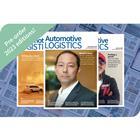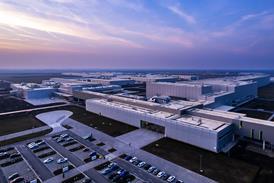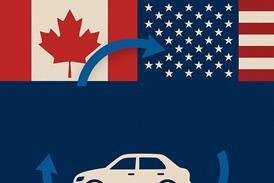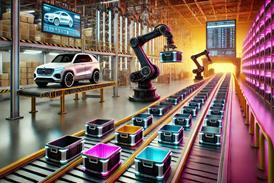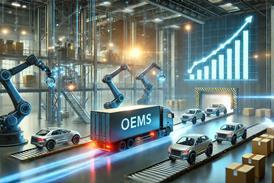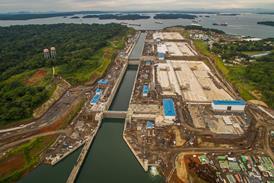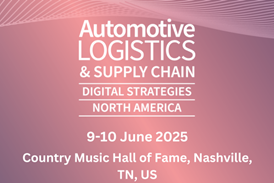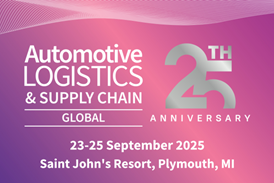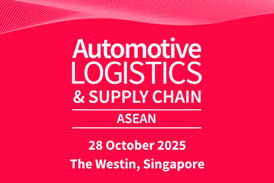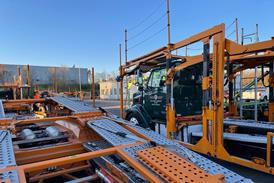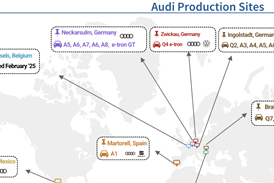In Depth – Page 47
-
 Feature
FeatureRussian regulation: Get local or get going
The industrial assembly policy that Russia’s government has been pursuing since 2008 initially looked to have played out quite well, encouraging the world’s leading automotive manufacturers to build assembly plants in the country. But after several economic crises, including a sharp devaluation of the rouble in 2014 and subsequent market ...
-
![White Bendy road [Converted]](https://d3n5uof8vony13.cloudfront.net/Pictures/100x67/1/8/6/19186_White-Bendy-road-Converted.jpg) Feature
FeatureTwists and turns in the road ahead
The European new vehicle market has showed strength in recent years, following a long decline after the global financial and subsequent Eurozone crises; sales have mostly recovered to pre-crisis levels and continued to rise in most major EU markets throughout 2017, with the exception of the UK.The outlook for the ...
-
 Feature
FeatureSeat: Delivering improvement
After reinventing much of its vehicle logistics following a severe reduction in output in the wake of the financial crisis, Volkswagen Group’s Spain-based Seat has since seen strong growth in production, exports and sales. That has put even more pressure on space and capacity at its main assembly location in ...
-
 Feature
FeatureAudi’s logistics part 2: Pursuing practical progression
There is little question that finished vehicle logistics has been among the least automated segments of the overall automotive production and supply chain process. From loading and unloading vehicles to and from trucks, ships and rail wagons to inspection and parking, as well as scanning vehicles into inventory and tracking systems, outbound logistics has remained, by and large, a manual, labour-intensive operation
-
 Feature
FeatureAudi’s logistics part 1: Prepared for a new reality
The recent history of the Audi brand is written deeply into the company’s supply chain and logistics, and can be read across the carmaker’s expanding geography, plant and parts handling operations
-
 Feature
FeatureAvoiding supply chain disruptions with effective legal planning
Even the greatest logisticians at the world’s most prestigious automotive companies can’t predict the future. Economic downturns occur, suppliers falter and disputes occur that endanger just-in-time manufacturing. While these disruptions in the supply chain are inevitable, they do not have to be catastrophic.Although the strategies shown here are written from ...
-
 Feature
FeatureRenault Nissan Automotive India part 2: Ensuring all brands are ready to go
Renault Nissan Automotive India, the joint venture division of the Renault Nissan Alliance that oversees production and distribution activities in the country, was established with a number of logistics advantages in mind. Its plant in Oragadam, close to the southern city of Chennai, is a manufacturing hub located within a ...
-
 Feature
FeatureA stormy year of negotiations, electric plans and cyber-attacks
As the year draws to close, major uncertainty regarding both Nafta and Brexit remains, as well a lack of clarity on what any changes could mean for the global automotive sector and the logistics industry that supports it.During the past 12 months, OEMs have made major strides towards an electric ...
-
 Feature
FeatureFacing digitalisation-driven disruption
Historically, traditional logistics players such as DHL, Kuehne + Nagel, DB Schenker, UPS and Nippon Express have operated in a stable world, where efficiency, standardisation and low cost have been the keys to success. Digitalisation, however, has begun to change this focus, transforming the market. New, digital-native entrants are better ...
-
 Feature
FeatureNoatum sets up automotive division to integrate Spanish port operations
Noatum Maritime has consolidated its position in Spain’s finished vehicle and ro-ro market with the integration of its vehicle handling businesses at the ports of Barcelona, Sagunto, Málaga and Santander with those in Pasajes and Tarragona.The company has now formed a new division called Noatum Maritime Automotive that will draw ...
-
 Feature
FeatureThe building blocks of demand
China and Europe are far apart, not just in terms of distance, but also culturally, economically and politically. Yet they occupy the same Eurasian land mass and trade between the two regions has been growing strongly. That includes automotive freight, with parts and vehicles moving in greater numbers in both ...
-
 Feature
FeatureNo more second-hand innovation
The conservation of time and the acceleration of goods in the supply chain have long been valued by OEMs and their partners in bringing new cars from production to market. Those principles are increasingly being brought to bear in the used car market, too, with tighter logistics chains and greater ...
-
 Feature
FeatureMoving with market currents
Growing sales prompt rising shipmentsThe first half of 2017 has seen a partial recovery in deep-sea shipments of new light vehicles. Management consultancy Maritime Strategies International (MSI) estimates that global shipments will be up around 3% during the first half of 2017, compared to the same period in 2016.According to ...
-
 Feature
FeatureNissan hits 20,000 exports from Brazil following project launch last year
Nissan has exported 20,000 vehicles from its plant in Resende, Brazil, since its export project began in March 2016, it has reported this week. What is more, the carmaker expects to increase exports by 50% in 2018.The carmaker is sending volumes of the March (43%) and Versa (57%) compact models ...
-
 Feature
FeatureNew awards celebrate excellence and innovation in automotive supply chains
The Automotive Logistics Group, which publishes the highly respected Automotive Logistics magazine as well as organising a series of global logistics conferences, has today announced the launch of an exciting new awards scheme for the automotive supply chain management sector.The Automotive Logistics Awards – Europe 2018 will recognise and reward ...
-
 Feature
FeatureSeat looks to digital supply chain and connected cars with Telefónica deal
Spanish telecommunications provider Telefónica is to become an IT supplier to carmaker Seat, following an agreement signed in the first week of November designed to develop connected car technology, as well as digitalise the supply chain and manufacturing process.Among the aims of the agreement is the application of 5G connectivity ...
-
 Feature
FeatureSummit report: Indian industry must turn reforms into progress
Discussions at this year’s Automotive Logistics India Summit in Chennai may have sounded remarkably familiar to those who attended the very first conference a decade earlier: infrastructure deficits, underdeveloped connections, a lack of rail transport options, a fragmented logistics market, a highly bureaucratic and unproductive customs regime, and the proliferation ...
-
 Feature
FeatureIT implementation: Touching the cutting edge
Twenty years ago, parts of today’s automotive supply chain would have seemed like science fiction – plants keeping just a few hours’ worth of highly traceable inventory, unmanned drones being used to monitor site activity, glasses with computer chips in them, self-driving vehicles, and management systems that predict the future, ...
-
 Feature
FeatureBMW tracking: Prevention is better than a cure
Few manufacturing operations have expanded as much over the past two decades as BMW’s Plant Spartanburg in Greer, South Carolina. After producing 411,000 X-series SUV models in 2016, it is now the carmaker’s largest global facility by assembly volume, and is headed towards its maximum capacity of 450,000 units per year, including the launch this year of the new X3.
-
 Feature
FeatureMines of information
Having invested over the past 20 years in data acquisition technology, the automotive industry is now casting around for ways to make sense of that data.

